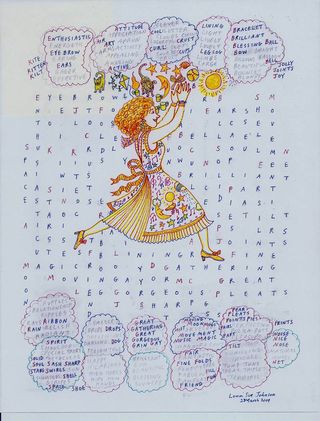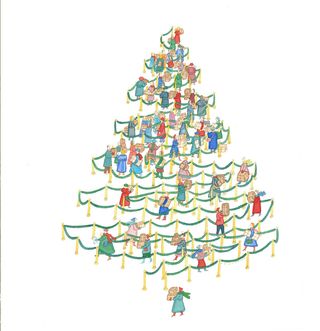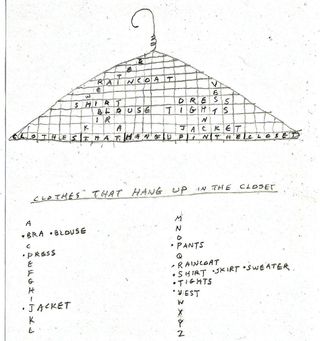Artist with Amnesia Offers a Picture into the Brain

After suffering devastating brain damage from a viral infection, artist Lonni Sue Johnson lost her memory. Now, after years of therapy, she is unveiling a new portfolio of "recovery art," while also teaching scientists a bit about the brain and creativity.
The new show at the Walters Art Museum in Baltimore follows Johnson's journey, including her artwork from before she got viral encephalitis in 2007 and as she recovered. The journey is providing scientists unique insights into the dire effects of amnesia and the complementary roles played by language and memory in her artistic expression.
"The illness destroyed the hippocampus — a brain structure important for memory and spatial thinking — on both sides of her brain," said cognitive scientist Barbara Landau at Johns Hopkins University, who has worked with Johnson. "Also sustaining damage were portions of the left temporal lobe that may be important for language and perception." [Top 10 Mysteries of the Mind]
"We are not yet sure how much recovery there has been from the amnesia, if any," Landau added. "Ms. Johnson is still deeply amnesic about events that have happened in her life, and she has great difficulty remembering events that now occur during her daily life."

The intensive art therapy, which was led by her mother, Margaret Kennard Johnson, led to a new portfolio that is both similar and different from her pre-amnesia work. Her past work has graced the cover of The New Yorker magazine and appeared in the New York Times.
"This art is distinctly different from the work she produced before the illness, yet some of the elements remain the same, and one can see a clear relationship between the old and new art," Landau said.
Johnson's old art was distinguished by intricate combinations of iconic visual elements — for instance, a Christmas tree made up of holiday shoppers lined up in a zigzagging queue. This approach invited viewers to inspect her work closely to explore layers of meaning. [See Johnson's artwork]
Sign up for the Live Science daily newsletter now
Get the world’s most fascinating discoveries delivered straight to your inbox.
After her illness, Johnson slowly recovered the ability to create art. A breakthrough came a few months into her recovery when a friend gave her a puzzle book that required her to find a set of target words embedded within a large set of letters. Within a week she began to make word lists of her own that she inserted into grids she had created.
Soon these word grids became artworks, drawing on what words mean, how they are spelled and how they are thematically related. For example, "Things You Hang in a Closet" yielded a drawing of a hanger with an embedded grid housing the words from an associated list of clothing.

"The art that she is now producing relies heavily on her knowledge of words and their meanings — something that was not damaged as a consequence of the illness," Landau said.
Johnson's experience is giving researchers a rare chance to better understand the underpinnings of brain function and art.
"One lesson is that creativity need not depend on a large store of personal experiences and memories of these, but rather, is somewhat separate from these, and can be deployed using surprising resources," Landau said. "In Ms. Johnson's case, her creativity clearly survived the illness."
The exhibition, entitled "Puzzles of the Brain: An Artist's Journey through Amnesia," will run from Sept. 17 through Dec. 11.
Follow LiveScience for the latest in science news and discoveries on Twitter @livescience and on Facebook.

Most Popular




